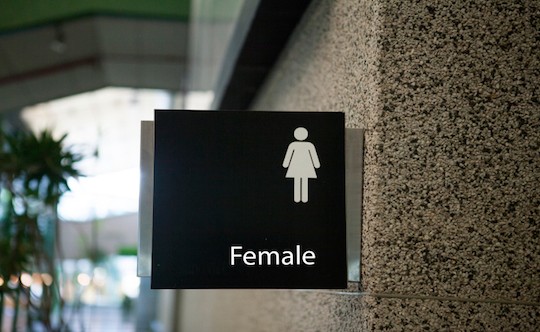Overactive Bladder: Think It’s A Normal Part Of Aging? Think Again.

Living with an overactive bladder isn’t easy. Neither is talking about it.
A study published in The Journal of Urology found that less than half of adults surveyed with overactive bladder symptoms had discussed them with their healthcare provider.
If you are suffering in silence, you’re not alone.
While an estimated 33 million Americans suffer from an overactive bladder – most of them women – it is still often referred to as a “closet disorder.” Symptoms include:
- a sudden, uncontrollable need to urinate
- a frequent need to urinate
- leakage of urine (known as incontinence)
- nocturia, the need to get up at least twice during the night to urinate
Many are simply too embarrassed to talk about something so private. Others consider it more of an inconvenience than a real health issue. Rather than changing their condition, they let the condition change their life, becoming slaves to the bathroom and pros at arranging their day-to-day activities around their bladder.
For those who do seek help, the news is good. Today there are a growing number and variety of treatment options to choose from to restore your quality of life.
If You Suspect You Have an Overactive Bladder…
Don’t ignore it.
Untreated, an overactive bladder can severely impact sleep patterns, relationships, work productivity, and social activities. Travel, exercise, and other leisure outings become increasingly stressful, for fear of not getting to a bathroom in time. Sufferers live with constant anxiety and embarrassment; depression often follows. In some cases it becomes difficult to even leave the house.
An overactive bladder may also be a sign of other more serious health problems. It can also increase the risk of nighttime falls, particularly in the elderly.
Don’t attribute it to aging.
While the condition is more prevalent among the elderly, an overactive bladder is not a normal part of the aging process. The condition affects women and men of all ages, even children.
An overactive bladder is typically caused by involuntary contractions of the bladder muscle, which produces a sudden, urgent need to urinate – even if the bladder contains only a small amount of urine. These sudden contractions may be caused by many factors, or a combination of factors, including infections, neurologic conditions, medication side effects, diet and lifestyle, or bladder and kidney stones. However, in some cases, the underlying cause of overactive bladder cannot be found yet treatment of your symptoms can help.
Don’t dehydrate yourself.
Drinking less water won’t necessarily improve your symptoms. In fact, it can lead to more concentrated urine, which can irritate the bladder and cause more frequent urination.
Do keep a diary.
A few days spent tracking how often you empty your bladder can be eye-opening. It can also help your doctor diagnose your condition and identify possible dietary irritants. Things to keep track of include when you have the urge to urinate, leakage amount, what you were doing at the time, and foods and amount of fluids consumed.
Get Your Life Back
If you or someone you love is suffering from an overactive bladder, treatment is available to relieve symptoms and return to a normal lifestyle. Get examined by a urogynecologist to confirm the diagnosis, rule out other health concerns, and determine the best treatment option.
In many cases, newly diagnosed patients find the most conservative approach – lifestyle or dietary changes – may be the only treatment needed to get relief. Behavior modification and bladder training can also help. If medication is required, there are an increasing number of options available today including a new medication, mirabegron, which is highly effective in reducing muscle contractions of the bladder.
Treatment strategies for overactive bladder include:
- Addressing underlying irritants, such as infections, bladder stones, and medication side effects
- Lifestyle changes, including changes in diet and fluid intake, weight loss, and avoiding caffeine, alcohol, and smoking
- Bladder training to help increase bladder capacity and the ability to hold urine
- Pelvic floor exercises to strengthen bladder muscles
- Medications to control the bladder muscles
- Nerve stimulation to control bladder muscles
- Surgery, only in the most severe cases
Life isn’t easy for the millions of women suffering from overactive bladder. These therapies can help, restoring your quality of life. If you have symptoms, visit your doctor or see a specialist. A urogynecologist, an OB/GYN who specializes in the care of women with pelvic floor disorders, can provide the expertise you need for accurate diagnosis and treatment, in an environment just for women. For more information about Texas Children’s Pavilion for Women and our services, visit here.
This post was originally published on the Texas Children's Blog here.
Want more buzz like this? Sign up for our Morning Buzz emails.
To leave a comment, please log in or create an account with The Buzz Magazines, Disqus, Facebook, or Twitter. Or you may post as a guest.



